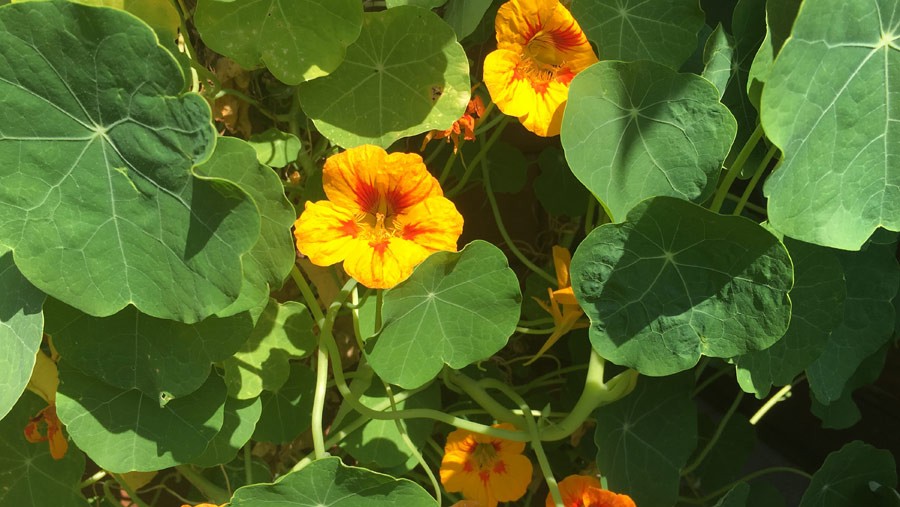The longer summer lasts, the more yellow, orange or red flowers shine in the beds – provided that you planted nasturtium. It is really a top tip for any garden.
There are several varieties, widely used is the large nasturtium. It is known as an eye-catcher in the cottage garden.
Contents
Nasturtium is easy to grow
For garden lovers, the beauty is that the plant is undemanding, grows and thrives almost everywhere – in the flower or vegetable bed anyway, as well as in a pot, on the balcony, in a raised bed, it even lends itself to a compost heap. If climbing aids are nearby, nasturtium uses them and climbs far up. In addition to the climbing varieties, there are also creeping varieties, which then form runners downwards or on the ground – so the plant is also ideal as a screen or for planting on walls or a pergola, for example.
Sowing only on warm days in May
As a rule, the nasturtium is not hardy. One of my specimens even came back in the raised bed the following year in the same spot; the previous year’s plant had apparently self-seeded. Wait with sowing until May or until no more night frost is to be expected. You can get seeds for a few euros (about 1.00 € – 2.00 €) in any nursery or hardware store – usually there is even a selection of several varieties. Of course, you can also grow the plants indoors, in which case they will bloom earlier after planting.
The seed is pressed about 1-2 centimeters in humus-rich soil and kept slightly moist at the beginning. Nasturtium loves light and sun, then it also forms abundant flowers. The soil does not need to be too rich in nutrients, it is more important to keep it moist. So protect the plant from drought, but do not overwater.

Fast growth and long flowering
A few days after sowing cress sprouts and quickly develops into a branched plant. The first flowers become visible a few weeks later. More flowers appear weekly – and the plant continues to bloom into the fall, as long as there is no threat of frost. In the oblique late summer light nasturtium shines especially beautiful.
During the summer, the only thing to watch out for is aphid or caterpillar infestation. The danger is less if you sow the seeds a little later in the spring – in late May or June.

Refining dishes with nasturtium
The plant is also something for the vegetable patch: Nasturtium is the icing on the cake for many salads, the flowers and also the leaves – preferably young – are edible and very healthy. In addition to salad, it can also be used to prepare a cream cheese, herb butter or cottage cheese spread. Nasturtium adds a slightly pungent, mustardy, peppery flavor to dishes. By the way, only after the leaves and flowers are cut off, an intense smell also becomes noticeable.
Versatile medicinal herb
In addition, nasturtium is a medicinal herb, it has already been named medicinal plant of the year. The leaves and flowers can be used. For example, crushed leaves can be prepared as a tea – they help against infectious diseases, typical flu infections, bronchitis, as well as urinary tract infections. It has also been proven to be effective against muscular pains.
A bee friendly plant
Last but not least, it is a herb that helps nature in the garden: the flowers attract insects and provide food for bees – so it also contributes to biodiversity. And all this with little gardening effort. 15 tips on how to easily achieve a natural, biodiverse garden.
So – think about the nasturtium when planning your flowers and garden!










